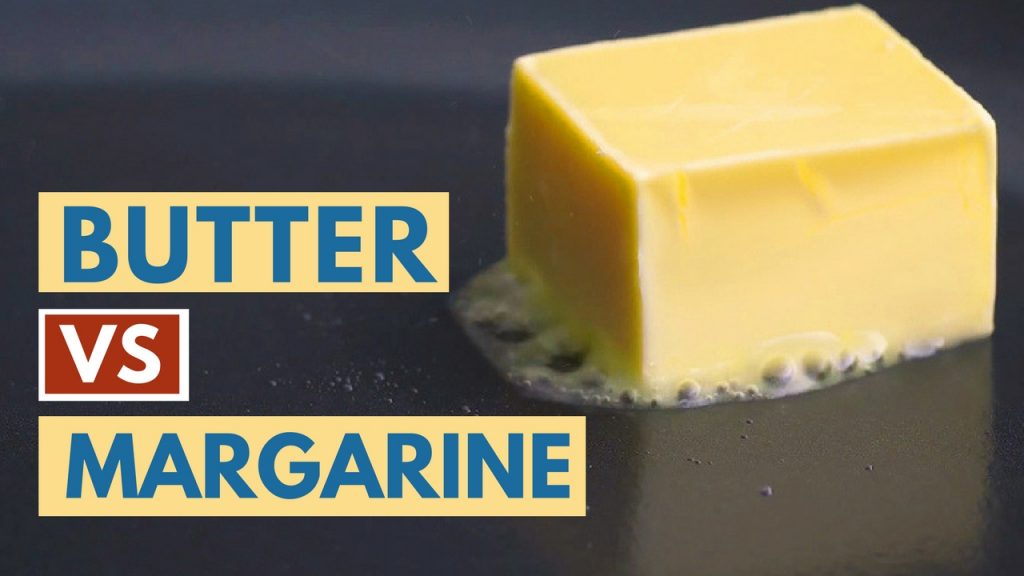Which is Better – Dairy Butter or Margarine
What is Dairy Butter
Dairy butter is made by churning cream from animal milk. It typically contains 81 per cent fat, with rest being mainly water. Salt is often added (11/2-2 per cent). The yellow colour of butter is due to the pigment carotene and varies with the diet of the cow. Cows fed on grass give a dark yellow cream and those fed on hay give pale cream. Butter is a good source of vitamin A. Concentrated butter, which has most of the water removed, is more suitable for frying. Butter, like hard margarines, is saturated fat and should be eaten in moderation. When a recipe calls for butter, an equivalent amount of polyunsaturated or monounsaturated margarine can be used. Vegetable oil can also be substituted for butter in baking.

What is Margarine
Margarine was invented by the French chemist Hippolyte Mege-Mouries in the late 1860s as a cheap butter substitute. However it did not become popular until catalytic hydrogenation was developed by the Dutch. This is a chemical technique that enables the hardening of liquid vegetable oils by reacting them with hydrogen in the presence of nickel.
Margarine caused vitamin A deficiency when it was first began to replace butter in Denmark. Margarine is now usually fortified with vitamin A, and also with vitamin D. It is sometimes coloured with betacarotene but more commonly annato or turmeric are used.
Choosing Margarine
Margarine has the same fat content as butter. The early margarines were heavily hydrogenated and were low in polyunsaturated fats. In the mid-1960s soft margarines high in polyunsaturates were introduced and these now dominate the market. Some margarines are made out of monounsaturated oils such as canola oil.
To be able to make cheap spreads some manufacturers switch the oils and fats they use depending on current market prices. They call this ‘blend flexibility’. The cheaper the spread, the more likely it is to have a variable fat composition. The cheapest oils are beef tallow, lard, fish oil, soya bean, rapeseed and palm oil. Beef tallow, lard and palm oil are high in saturated fats and so pose health risks, especially when consumed in excess. Fish oils from cold water tend to be high polyunsaturated fatty acids of the omega-3 series as do oils from soya bean and rapeseed. However, the hydrogenation process destroys the the omega-3 fatty acids. Small amounts of omega-3 fatty acids are required in the diet and these requirements are easily met by a normal diet.
Margarines high in polyunsaturated fatty acids or monounsaturated fatty acids are generally regarded as the healthiest type and contain plenty of vitamin E. Instead of hydrogenating liquid vegetable oil, manufacturers now add a tiny amount of modified palm and palm kernel oil to enhance the spreadability of margarine, creating a soft margarine that’s trans fatty acid free. Stick margarine can be just as harmful as excesive butter, if not worse. The process that stiffens vegetable oil into a stick also creates trans fats. Like saturated fats, trans fats increase LDL cholesterol (“bad” cholesterol) and lower HDL cholesterol (“good” cholesterol) in the blood. In general, the softer the margarine, the better. Go for non-hydrogenated margarine in a tub or squeeze bottle rather than hard sticks of margarine.




